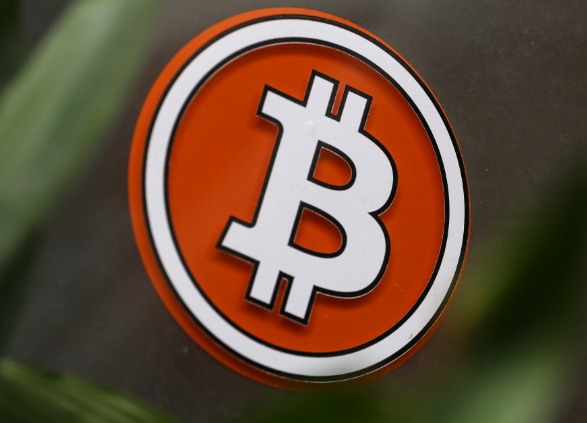The price graph for bitcoin occasionally resembles the rough edge of a saw, with significant jumps up and down. But when crypto prices go down without any corresponding jump, investors might wonder: “When will the price of cryptocurrency increase again?”
Predictions of short-term prices are rarely accurate. They may succeed through skill or luck, depending on the circumstances. Any coin’s price, or the price of anything else, is not assured to increase simply because it decreased from its all-time high.
It’s crucial to remember that the cryptocurrency market has strong relationships with other markets. As a result, changes in the value of assets like Bitcoin frequently reflect changes in these markets. Looking at stock market performance, especially at tech stocks that took a beating earlier this year, the connection is clear. Tech stocks experienced a notable sell-off amid apprehension about the Fed’s interest rate increase. This sell-off was mirrored across many digital assets, particularly Bitcoin, highlighting the interconnectedness of these markets.
Though many point to the Fed’s interest rate increase as the main cause of falling stock and cryptocurrency prices, there’s more to this story to explore, especially in the long run. Investors can improve their outlook and Bitcoin investment strategies by being aware of these underlying trends.
What Is Bitcoin?
In a blockchain-based financial system, the base network or underlying infrastructure is represented by Layer 1 blockchains, such as Bitcoin. Without the aid of another network, layer 1 blockchains can complete and validate transactions. They also have a native token of their own that is used to pay transaction costs.
Many people use it as a speculative store of value. It is a type of digital currency. Decentralized systems are those that lack centralized management. Thousands of computers located all over the world instead run Bitcoin. It is well-liked despite not being recognized as legal tender in the majority of the world because it is uncensorable, has a limited supply of 21 million, and enables transactions to be completed by anyone, at any time, and from any location.
A blockchain is a decentralized, distributed ledger that tracks the history of digital assets, and it underpins Bitcoin, like the majority of cryptocurrencies. By providing incentives that make tampering unprofitable for malicious users, the blockchain secures cryptocurrency transactions. The implication is that ownership of cryptocurrency is held probabilistically through trustless enforcement, as opposed to with certainty.
The closest investment comparison for Bitcoin is to digital gold. It can be viewed as a speculative super commodity with a value proposition based on it being a perfectly scarce, portable, immutable, and divisible savings technology.
Because of these factors, it can largely avoid being impacted by variables that might otherwise lower its value, such as inflation, seigniorage, and poor monetary policy. Instead of being controlled by a centralized bank, Bitcoin is run by decentralized, democratically governed computer algorithms.
Bitcoin Price Movement In Recent Years
Since Bitcoin was created in 2009, it will undoubtedly take some time to discuss its price development and movement since that time.
As with other cryptocurrencies, the price of Bitcoin has changed considerably since then. We monitored the price movement of bitcoin in 2021 to determine its level of volatility.
Bitcoin’s price increased by 559% on January 9, 2021, as compared to the prior year, according to CoinMarketCap. The Bitcoin Taproot update is one aspect that contributes to this increase.
Bitcoin’s price record in 2020 was reached in less than a month in 2021. On January 7th, 2021, BTC’s price soared to US$ 40,000.
Then, in mid-April 2021, Bitcoin reached its record high, reaching US$ 60,000. Due to Coinbase’s decision to go public on April 14, 2021, there was a significant increase.
Unfortunately, the price of bitcoin fell by 50% over the summer of 2021 and hit its lowest point on July 19, 2021, at US$29,000.
BTC briefly recouped to US$ 52,693 in September 2021, a few months later. Two weeks later, a sizable withdrawal occurred, which caused the price to drop once more to US$ 4,709.
How Is Bitcoin Financed?
The network that supports Bitcoin incentivizes miners by rewarding their work with coins, despite the fact that it is technically not funded by anyone. The network verifies transactions through a process known as bitcoin mining. To compete for the next block on the Bitcoin network, miners use expensive hardware. The quickest miners solve computational math issues that validate network transactions.
Because they facilitate transactions and produce newly created Bitcoins, miners are essential to the Bitcoin network. A high entry barrier and significant energy consumption are associated with bitcoin mining.
Proof of work, or PoW, is the name of this Bitcoin mining process. Proof of stake (PoS), a less expensive and more energy-efficient method of transaction verification, is increasingly replacing the proof of work (PoW) idea in cryptocurrencies. PoW will continue to be used in Bitcoin for the time being, even though the PoS idea is likely to gain more acceptance.

What Do Investors’ Concerns About Bitcoin’s Bounce Mean?
Investors must decide whether this indicates the bottom of the Bitcoin price has been reached or if it is simply a dead cat bounce, in which prices briefly recover in the midst of a longer-term downward trend before starting to decline again.
While the bounce has given us a much-needed reprieve, and it’s possible that the catastrophic wave of liquidations among major players that we witnessed in May and June won’t happen again on the same scale, the truth is that the geopolitical environment, escalating inflation, and the Fed’s approach to interest rates place us in an uncharted territory.
Even in the best of circumstances, it is nearly impossible to predict the short-term price action of digital assets, as anyone who is familiar with the sector is aware. In the current economic climate, that is especially valid.
Pros And Cons Of Bitcoin
Although Bitcoin has a stellar reputation in the cryptocurrency world, it also has a mix of advantages and disadvantages when compared to other cryptocurrencies.
Pros
- Most decentralized cryptocurrency
- Strong reputation, concrete aim and global recognition
- Higher level of trust and stability than many other cryptocurrencies
Cons
- Proof-of-work (PoW) mining process not eco-friendly
- Serious scalability issues
Several Factors That Drive Bitcoin Price Boost
Since the moment of its creation, three main factors have influenced the price of bitcoin.
Scarcity Level
Bitcoin has a special characteristic that makes it stand out: a constrained supply. The total number of Bitcoin tokens ever created is 21, and there are currently between 18 and 19 million of them in use.
Cryptocurrency experts pointed out this scarcity as “Bitcoin charm”.
“Even though it has a fixed amount of supply, market demand still grows,” said According to NextAdvisor, Alexis Johnson is the president of Light Node Media, a blockchain-specific event company.
Others claimed that because of its scarcity and the fierce competition to obtain it, Bitcoin is superior.
“It is the reason people purchase these coins, psychological aspect,” said Nelson Mercan, a co-founder of Light Node Media.
High Bitcoin Adoption
The rising adoption rate is yet another important factor driving up the price of bitcoin. According to Kate Waltman, a cryptocurrency CPA specialist quoted by Yahoo!, more people are now willing to purchase and explore the fascinating world of cryptocurrencies. Finance.
“Cryptocurrency technology is being adopted at a faster speed than human first adopted the internet,” he said. On the basis of that supposition, the high rate of adoption of this cryptocurrency will raise the price of Bitcoin even more.
Bitcoin adoption has increased by 113% annually, according to data from digital asset management company CoinShares.
Mining Cycle
The halving cycle is another significant driver of the recent increase in the price of bitcoin. An algorithmic attempt to cut the number of coins in circulation in half is called “halving.”
The number of coins that are issued following the halving could change, which could later have an impact on the price of bitcoin.
Is Bitcoin A Real Currency Or Is It Just A Fad?
The provision of decentralized financial (DeFi) systems is the tenet of the cryptocurrency community’s story. According to this story, Bitcoin is arguably the gold standard. A fair and open currency for a divided world, it is a new financial system that cannot be influenced or controlled by politics or human greed. It is not intended to be used to purchase coffee; rather, it is intended to become the following major reserve currency.
Technically speaking, Bitcoin is the largest cryptocurrency by market capitalization and the most decentralized cryptocurrency in the entire world. Its governance is more user-driven than any other blockchain, which explains why. It is also the only well-known cryptocurrency with an anonymous creator, pure organic growth, and multiple testings, making it the most meritocratic one available.
Even though Bitcoin is the largest decentralized currency, its critics contend that it lacks sufficient functionality to maintain its dominance indefinitely. They think that eventually BTC will be replaced by more advanced cryptos like Ethereum. There are no assurances, but it might be true and Ethereum has made significant progress in comparison to Bitcoin.
Simply put, Bitcoin is incredibly distinctive. Beyond size, there are significant differences between it and other cryptocurrencies. It is what it represents in terms of distributing power among as many people as possible, away from a select few. The stories behind it are crucial in getting people to buy it and spread the word.
What Steps Should Be Taken If The Price Of Bitcoin Falls?
Not every cryptocurrency today is seeing its price fall, including Bitcoin. Because of the US Federal Reserve’s policy of tightening its monetary policy and raising interest rates, the entire cryptocurrency world is actually experiencing extreme fear and tremendous pressure. As a result, the prices of many other cryptocurrencies, including Ethereum, XRP, Cardano, and many other coins, are falling. In fact, the same US Federal Reserve policy has an impact on the biggest stock exchanges around the world.
Can Bitcoin Drop Below $20,000?
In June, Bitcoin already dropped below $20,000, even dipping under $18,000. Since then, Bitcoin has remained above $20,000 and appears to be fairly stable. $30,000 was the previous support and didn’t hold forever, however. Following news of China’s crackdown on cryptocurrency mining and trading, it last fell below the $30,000 threshold in July 2021. Given China’s prominence in the cryptocurrency mining sector, this sharp decline in price can best be explained. Similarly, the current price action of BTC can be explained.
It’s crucial to look at the factors preventing Bitcoin’s growth when determining whether its price will ever fall below this level again. The war in Ukraine, impending interest rate increases, regulatory pressure from foreign governments, and market policies from the U.S. Federal Reserve are a few of the biggest short-term pressures., all of which could drag the price of BTC down.
When looking at the long term, halving events are another aspect that might work against Bitcoin. When the reward for validating transactions through mining is cut in half, this is known as a halving event. The value of the Bitcoins still to be mined rises as a result of this process, which also adds to the coin’s overall value.
The timing of halving events is crucial because it affects the cyclical price fluctuations of bitcoin. For instance, investors anticipated an 18 to 24 month bull market after the most recent price halving event, which occurred in 2020. While price increases did occur during that time, with BTC reaching an all-time high, some investors anticipate a sustained bear market to follow as the 18 to 24 month window comes to an end. The longer-term price movement of Bitcoin may be explained by halving events in addition to the earlier, more immediate events mentioned above.
Does Investing In Bitcoin Make Sense?
Because historically, it appears that Bitcoin will always rise again after a correction, it might be worthwhile to invest in. Many view it as a good buying opportunity because the price is nearly zero compared to its record highs. The market has been shaken by recent geopolitical risks and potential Fed rate hikes. The fear-and-greed index for Bitcoin illustrates this attitude. A good buying opportunity may exist when the market sentiment is overwhelmingly negative. When it is particularly greedy, a dip could be on the horizon. This isn’t ideal because, as with LUNA or UST in the recent collapse of the Terra ecosystem, sentiment would also be extremely fearful just before a cryptocurrency falls apart.
The fear-and-greed index uses a 0 to 100 scale, with a value of 50 denoting greed and a value of 50 denoting fear in the market. Usually, a fearful market is oversold, and a greedy market is overbought. The fear-and-greed index fell as low as 9 (extreme fear), but it has since risen to 31 (fear).



